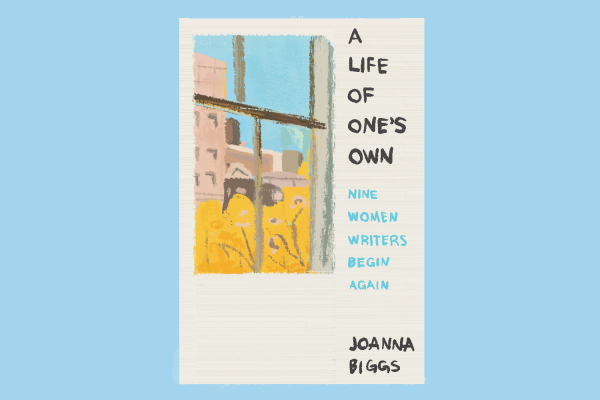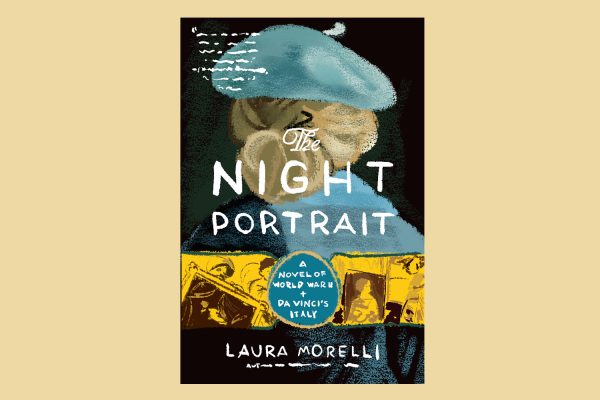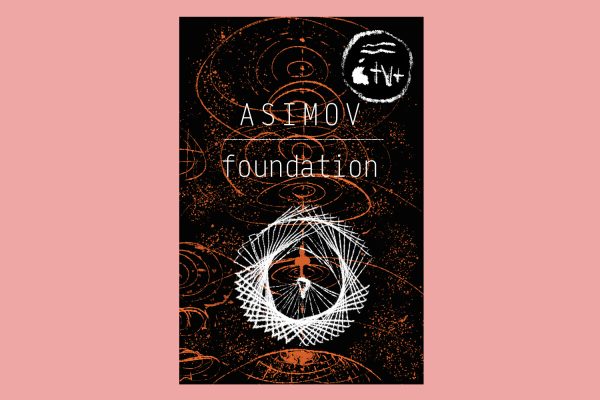“A Life of One’s Own: Nine Women Writers Begin Again” by Joanna Biggs
— Alexa Donovan, Deputy Arts Editor

Mixing memoir with biography, Joanna Biggs seeks to understand her own story by exploring the lives of her favorite women writers, with a particular focus on times of transition with love and loss.
After divorcing her husband, Biggs found herself gravitating toward nine influential female writers — Mary Wollstonecraft, George Eliot, Zora Neale Hurston, Virginia Woolf, Simone de Beauvoir, Sylvia Plath, Toni Morrison and Elena Ferrante — to help her through this new beginning. These women’s lives are explored through shortened biographies, with one chapter devoted to each. Within this, Biggs shares her own story of love, loss and life transition, weaving it seamlessly into those of the women she admires.
As with any form of first-person literary criticism, there is a fine line of self-conflation the author walks. Biggs, though, walks this line well. She succinctly showcases the way in which women, herself included, rely on the worn-out paths of others to create their own, using the wisdom and reflections of those who came before them. “A Life of One’s Own” is a great read for literature lovers and those facing challenging times of change.
“The Night Portrait” by Laura Morelli
— Katherine Welander, Copy Chief

“Imagine a world without art, without music, dancing, without the things we do not really need. It would not be a world worth living in.”
Through the life stories of two women living nearly 500 years apart, Laura Morelli’s “The Night Portrait” tells the story of Leonardo da Vinci’s famous “Lady with an Ermine.” The novel is set in both 1492 Milan and World War II Munich, and it ties together the journeys of Cecilia Gallerani and Edith Becker. The former is the mistress of the Duke of Milan and subject of “Lady with an Ermine,” while the latter is a German art conservator who becomes unwillingly involved in the Nazi confiscation of art throughout Europe.
Although Leonardo’s painting is central to “The Night Portrait,” the novel is truly about the efforts of the two women to forge their own paths while living at the whims of powerful men. For Cecilia, this means solidifying her ever-precarious position in the court of the Duke of Milan, which she hopes Leonardo’s portrait will help her achieve. Edith, following the theft of “Lady with an Ermine” from a Polish collection, risks her life and works in secret to document and return countless stolen works to their original owners.
I am an art lover at heart, so I’ll admit I was initially drawn to this book because of the painting at its center. But I found the overall themes to be surprisingly moving and insightful. Particularly noteworthy were the explorations of both the powerlessness one feels when they’re at the mercy of others’ decisions, and the contemplation of art’s value relative to human life.
“Never Let Me Go” by Kazuo Ishiguro
— Ana-Sofia Erath, Contributing Writer

In “Never Let Me Go,” Kathy, a young woman reflecting on her years at a secluded, English boarding school, reconnects with two of her classmates as they seek to understand their eerie upbringings.
Kazuo Ishiguro, a Nobel Prize-winning author, knows exactly how much information to divulge in order to give readers a false sense of comprehension, before pulling the carpet out from under them. As Kathy recounts coming-of-age among secretive professors and inexplicable traditions with her classmates, readers become addicted to the thrill of what’s been left unsaid.
I recommend this novel to those seeking a vivid escape in the company of characters who, just like us, are trying to understand their purposes — even if the answers they find rattle them.
“Foundation” by Isaac Asimov
— Tori Morales, Editor-at-Large

A once-glorious galactic empire is now crumbling. Scientific knowledge has decayed, making ancient technology seem like incomprehensible magic. Daring traders are getting rich by ferrying goods and raw materials across the anarchic space between planets.
Published in 1951, Isaac Asimov’s “Foundation” introduced ideas of the future that have become integral to science fiction as a genre moving forward. The story follows a planet — called the Foundation — on the outskirts of the Empire as its people prepare to preserve humanity’s knowledge for the millenia it will take to restore galactic civilization.
“Foundation” is one of the most engaging sci-fi novels I’ve ever read — and I read a lot of sci-fi. Like other books by Asimov, and sci-fi generally, “Foundation” is more about its ideas than its characters. The narrative features large time jumps and doesn’t follow a single person consistently, but instead focuses on the collective journey of galactic humans.
“Foundation” is a page-turner full of unexpected twists and thought-provoking predicaments. If you’re willing to suspend your disbelief for a classic sci-fi tale exploring ideas of shared destiny, faith and space politics, then this book is certainly for you.
Contact the Arts Desk at [email protected].

























































































































































